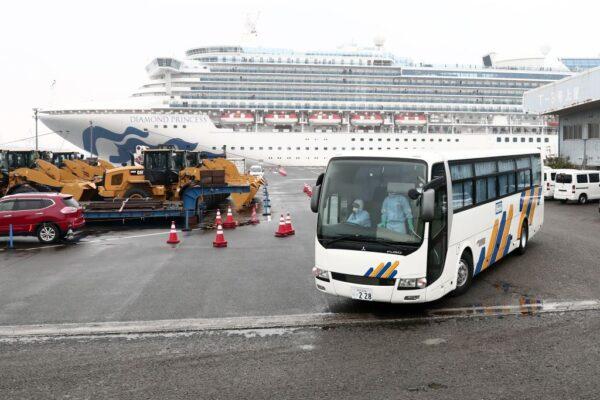Japan’s entire school system, from elementary to high schools, will be asked to close from March 2 until their upcoming spring break late in the month to help contain the coronavirus outbreak, Prime Minister Shinzo Abe said on Thursday.
The dramatic escalation of Japan’s fight against the virus follows rising criticism of what has been seen as a lukewarm government response.
“This coming week or two are an extremely important period,” Abe told a coronavirus task force.
“Prioritizing childrens’ health and safety about everything else, we will ask all the elementary, junior high and high schools across Japan to temporarily close from March 2 to spring break.”
The Japanese school year ends in March, with spring vacation usually starting at the end of the month.
A woman working as a tour bus guide tested positive for the coronavirus for a second time having suffered from the virus previously and recovered, Osaka’s prefectural government said. Her case, the first known person in Japan, highlighted how much is still unknown about the virus even as concerns grow about its global spread.
The number of cases in Japan rose on Thursday to more than 200, up from the official tally of 186 late on Wednesday. On the main northern island of Hokkaido, 15 new cases, including two children under the age of 10, were confirmed.

How Do I Go To Work?
Thursday’s sudden announcement about schools set off a flurry of worries on social media among parents now scrambling to arrange childcare.“My honest feeling—all schools on break? It’s important to protect children, but what happens if they have working parents?” wrote @Kogoro1982.

A man in his 80s died in Hokkaido after contracting the coronavirus, the prefectural government said, bringing the total number of people who have died in Japan to eight, including four from the ship.
The woman who tested positive twice, a resident of Osaka, in western Japan, tested positive on Wednesday after developing a sore throat and chest pains, the prefectural government said in a statement, describing her as being in her 40s. She first tested positive in late January and was discharged from hospital on Feb. 1 after recovering, according to the statement.
Though a first known case for Japan, second positive tests have been reported in China—one on Feb. 21—where the disease originated late last year.
The outbreak has spread rapidly and widely, infecting tens of thousands globally and killing many, the vast majority in mainland China.
Health Minister Katsunobu Kato said in parliament the central government would need keep tabs on the condition of those previously discharged, as health experts analyzed the implications of testing positive for the virus after an initial recovery.
“Once you have the infection, it could remain dormant and with minimal symptoms, and then you can get an exacerbation if it finds its way into the lungs,” said Philip Tierno Jr., Professor of Microbiology and Pathology at NYU School of Medicine.
Tierno said much remains unknown about the virus. “I’m not certain that this is not bi-phasic, like anthrax,” he said, meaning the disease appears to go away before recurring.
Scalding Down Events
The health ministry said on Thursday that with the Diamond Princess still located south of Tokyo, about 240 foreign and Japanese crew members who have tested negative for the virus would disembark from the ship over the next few days.Those with no symptoms would remain at a facility near Tokyo for further monitoring, the ministry said in a statement. An official could not immediately confirm the total number of crew on board the ship, which was carrying around 3,700 people when it first docked on Feb. 3.
Japan’s biggest trading group, Mitsubishi Corp, said it was telling all of its 3,800 staff in the country to work from home for two weeks starting Friday.





